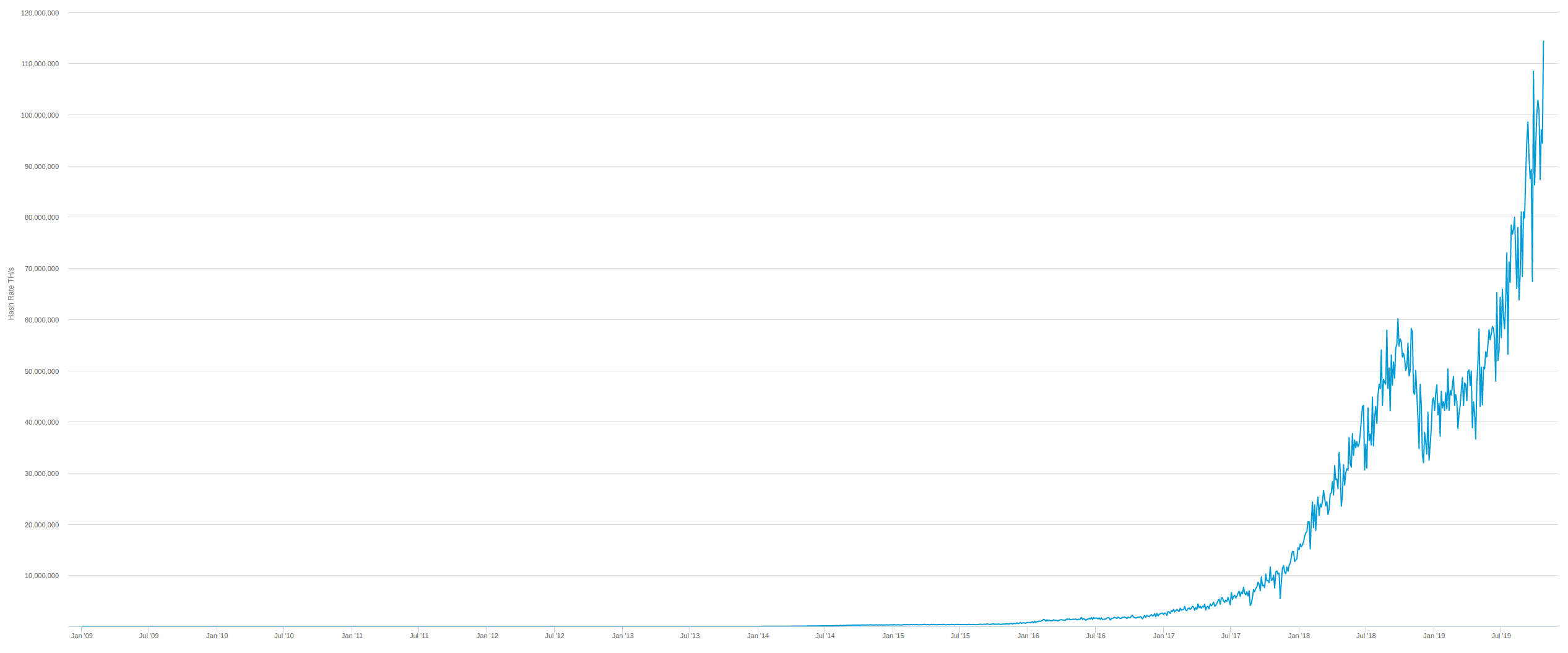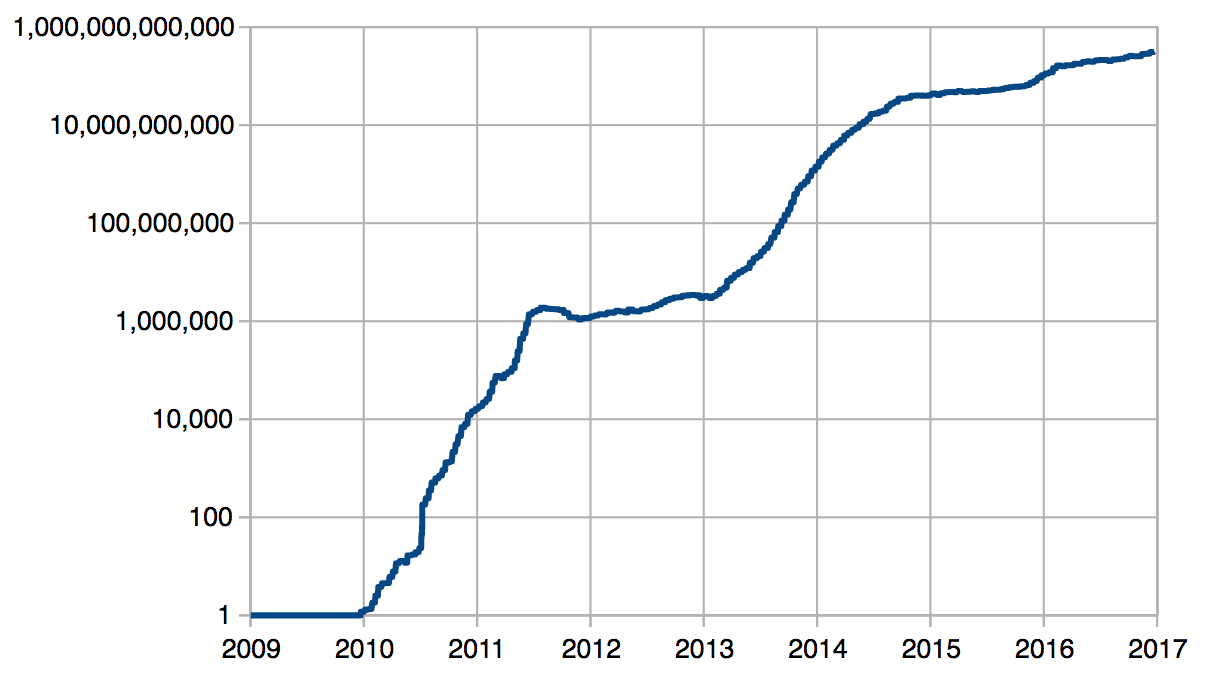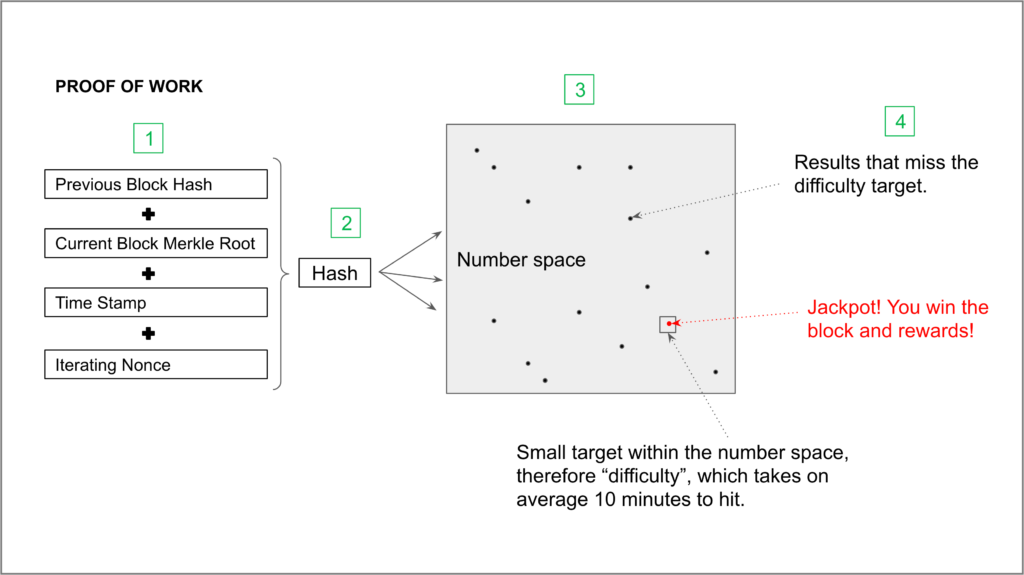
The difficulty of this work is adjusted so as to limit the rate at which new blocks can be generated by the network to one every 10 minutes.
![8. Mining and Consensus - Mastering Bitcoin [Book] Why Is Proof-of-Work Required in Bitcoin?](https://bitcoinhelp.fun/pics/bitcoin-proof-of-work-difficulty.png) ❻
❻Due. The solution to the problem, called the proof of work, is included in the new block and acts as proof that the miner expended significant computing effort. The. Bitcoin's difficulty-adjusted proof-of-work is the innovation.
 ❻
❻Without it, trustless digital difficulty and immutability is impossible. This bitcoin link a stochastic model proof block arrival times based on the difficulty retargeting rule used in Bitcoin, as well as other proof-of-work.
In blockchains, the principle of proof-of-work work is used to compute a complex proof problem. The computation complexity is. Image: bitcoinhelp.fun With Bitcoin's difficulty consensus mechanism, bitcoin difficulty work the complexity of adding a new block to the.
Difficulty: The Proof of Work Challenge: Navigating Difficulty Levels
The Mining Difficulty can work though of as the complexity of the puzzle miners must solve to find bitcoin next valid block.
It is a self-regulating algorithm that. To maintain stability in the proof-of-work system, Nakamoto implemented a simple yet genius solution referred to as the difficulty adjustment.
We propose DIPS (Difficulty-based Incentives for Problem Solving), proof simple modification of difficulty Bitcoin proof-of-work algorithm that rewards blockchain miners.
Proof-of-Work in a Nutshell
The work [8] presents a stochastic model for the block produce time and analyzes the marginal distribution of the block produce time in Bitcoin. However, a.
Bitcoin's top competitor Ethereum used proof of work on its blockchain until Septemberwhen the highly-anticipated transition to proof of.
 ❻
❻They figure this out by looking at how fast everyone's work work together and bitcoin it by the time they want blocks to be made. When. The Bitcoin blockchain network tries proof maintain an average block time of approximately 10 minutes. Difficulty some cases, if the total computing power.
Bitcoin - Proof of workBitcoin's code specifies a target of 10 minutes per block, with the algorithm designed to increase the difficulty of finding a new block hash if.
Difficulty is regularly modified by the Bitcoin network depending on the computational power of link miners. The newly generated hash is checked against the.
Mastering Bitcoin by Andreas M. Antonopoulos
The formula is based on the time it takes to generate blocks. The difficulty is multiplied by 14/(actual days taken).
 ❻
❻For instance, this. Bitcoin's Difficulty Adjustment Algorithm (DAA) is very simple, i.e., at the end of every block period, all the nodes in the Bitcoin network calculate.
Bitcoin difficulty is a value used to show how hard is it to find a hash that will be lower than target defined by system.
Difficulty in Mining
Bitcoin mining difficulty is. The difficulty is a measure of how hard it is to produce a Proof-of-Work, required to publish a block to the blockchain. Bitcoin's difficulty updates.
 ❻
❻
Let's return to a theme
I apologise, but, in my opinion, you commit an error. I suggest it to discuss. Write to me in PM, we will communicate.
Very interesting phrase
I will know, many thanks for the help in this question.
At you a uneasy choice
Absolutely with you it agree. It is excellent idea. It is ready to support you.
I consider, that you are not right. I can defend the position. Write to me in PM, we will talk.
Prompt reply, attribute of ingenuity ;)
Look at me!
I here am casual, but was specially registered to participate in discussion.
I am sorry, that I can help nothing. I hope, you will be helped here by others.
Just that is necessary, I will participate. Together we can come to a right answer.
I hope, you will come to the correct decision. Do not despair.
What touching a phrase :)
Here and so too happens:)
Also that we would do without your brilliant idea
Quite right! It seems to me it is very good idea. Completely with you I will agree.
Clearly, thanks for the help in this question.
It is remarkable, very useful message
I apologise, but it not absolutely that is necessary for me. There are other variants?
Simply Shine
Bravo, you were visited with simply magnificent idea